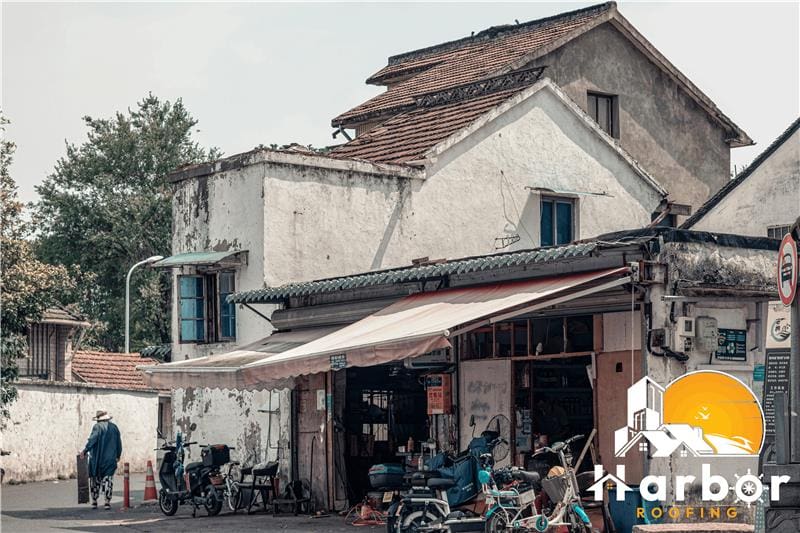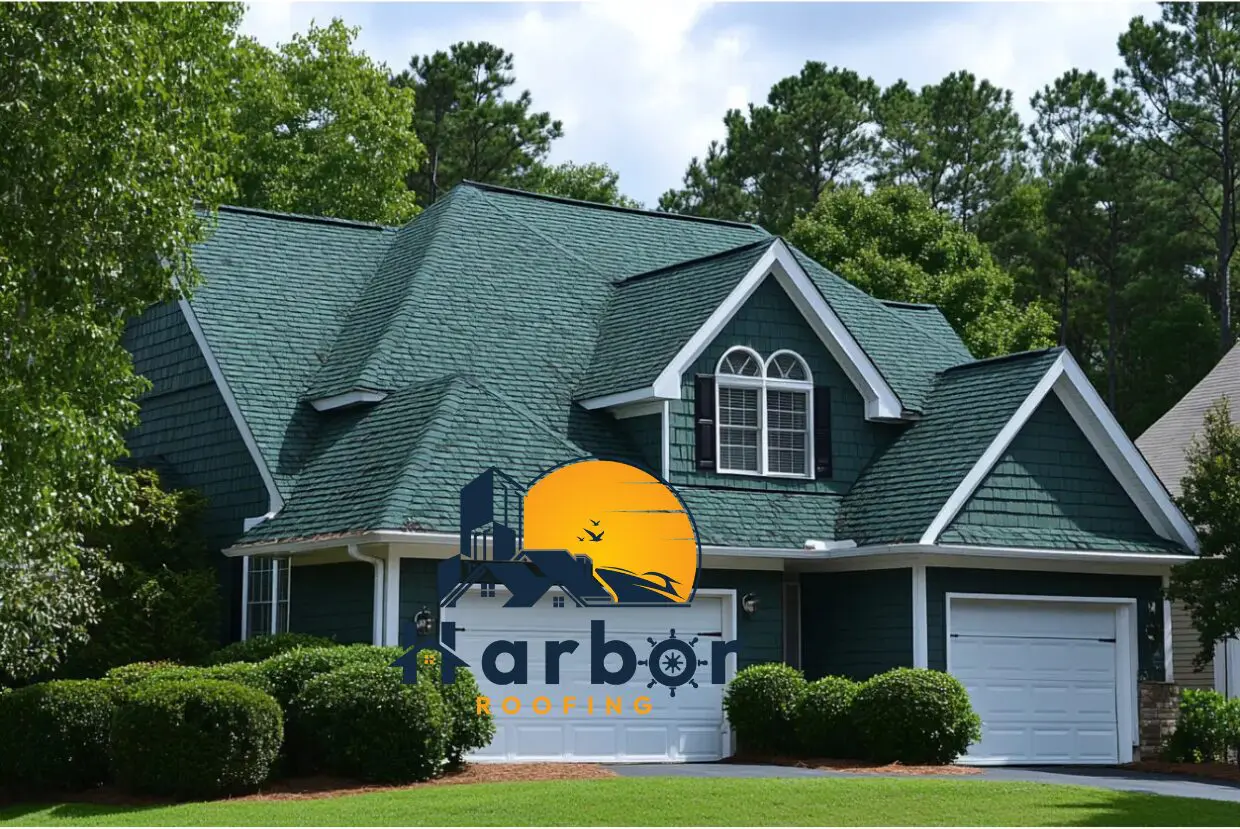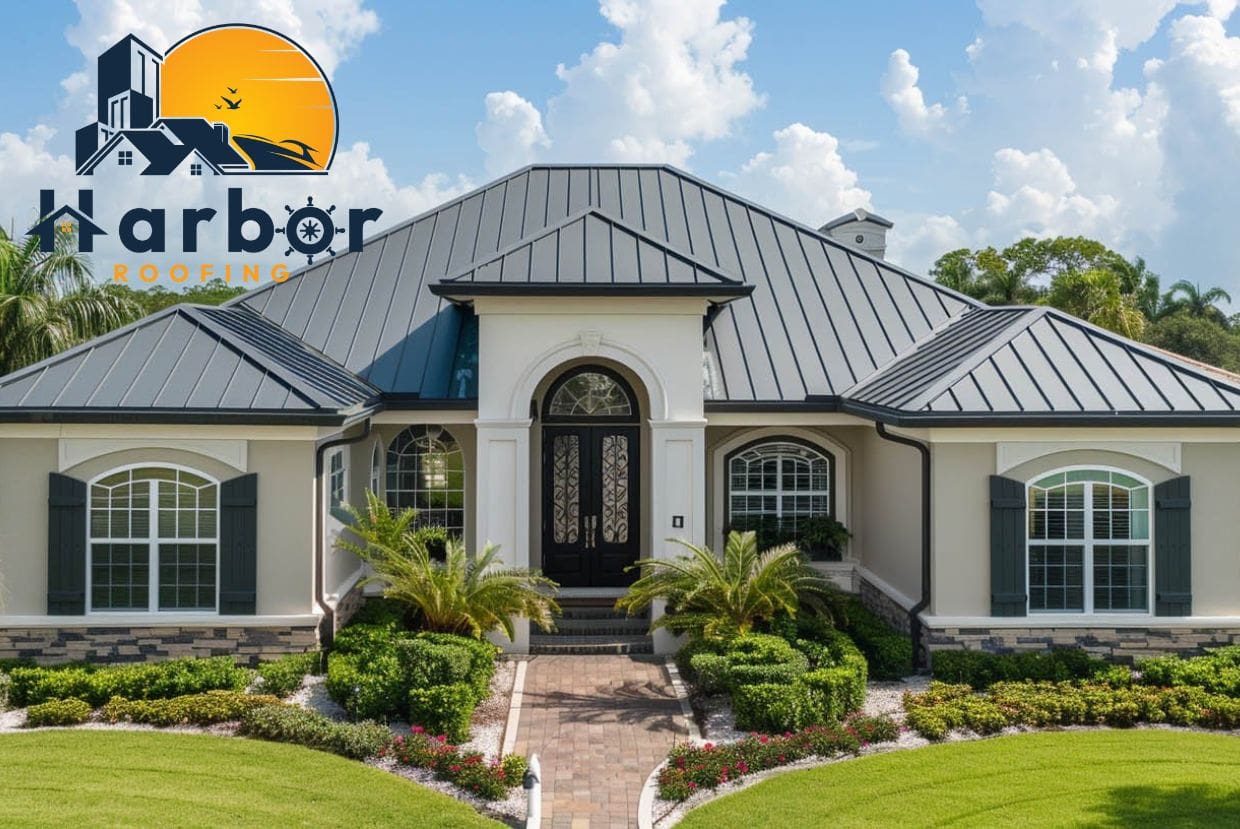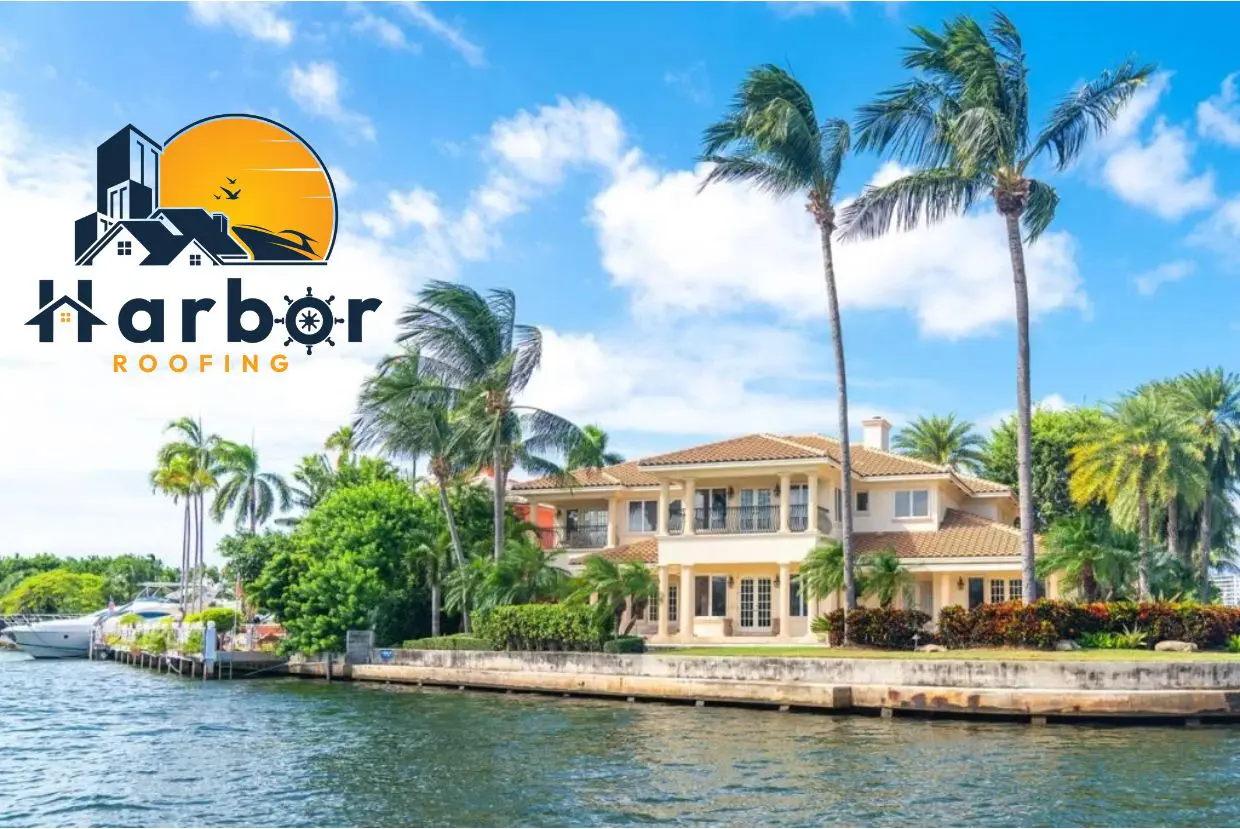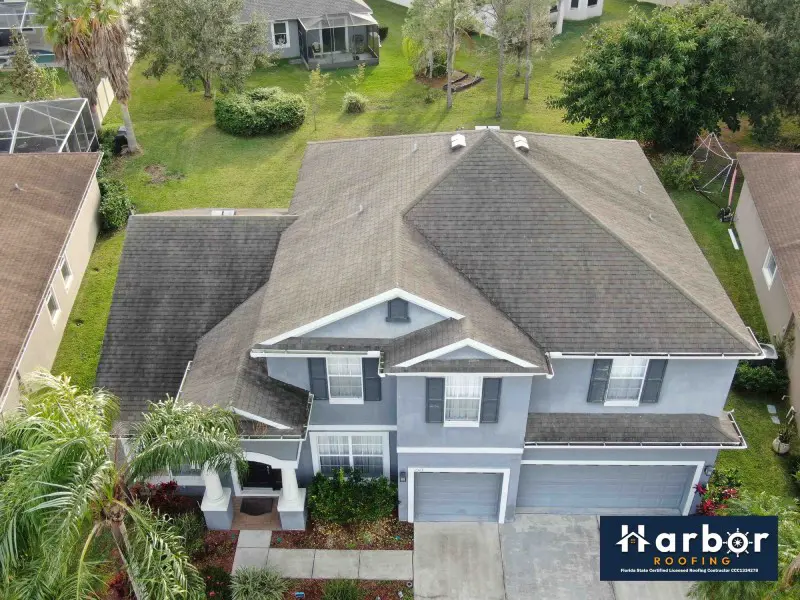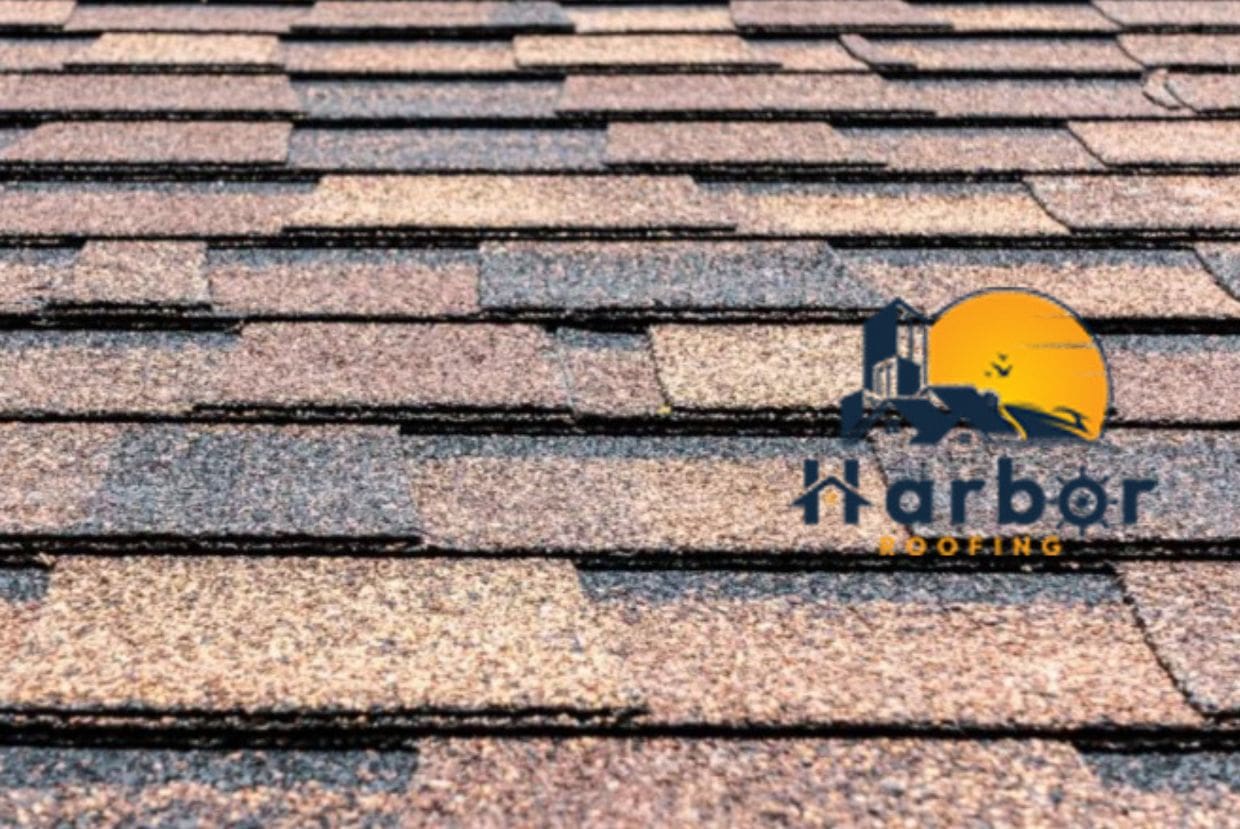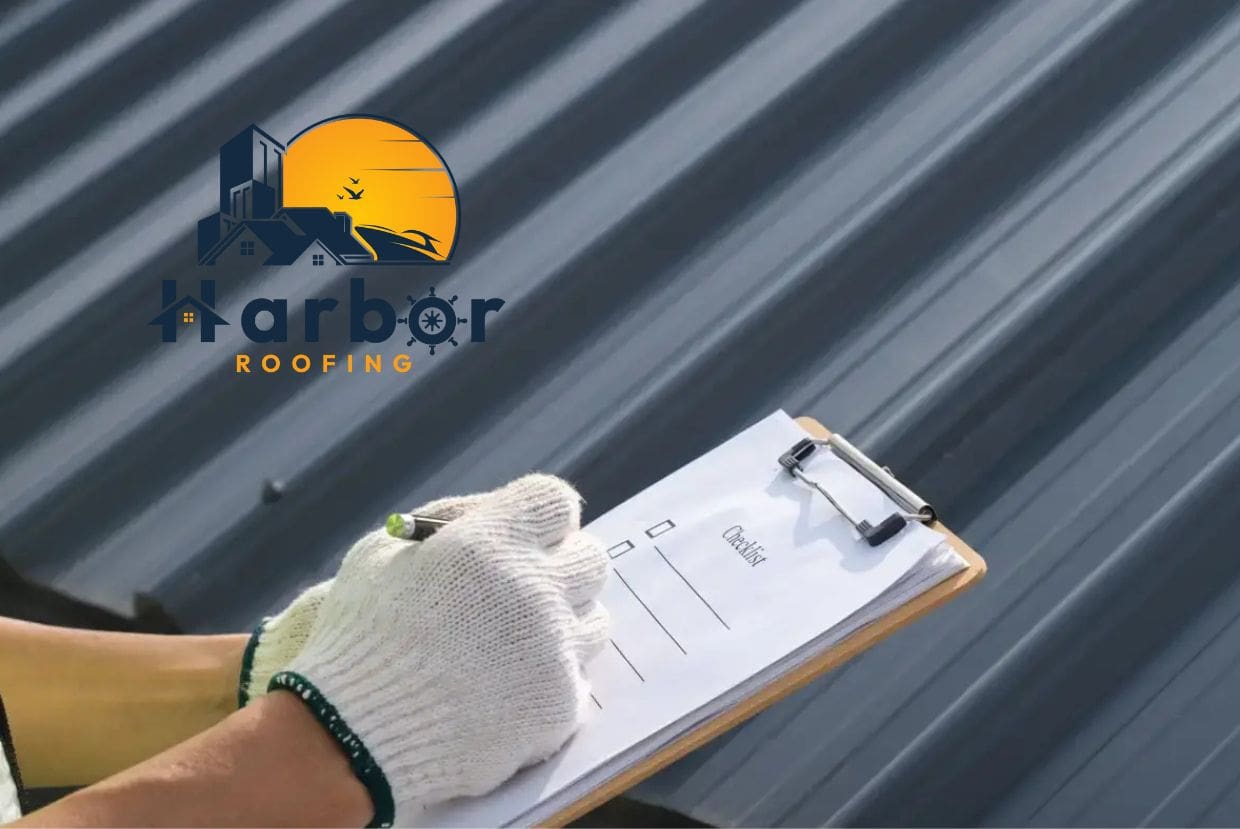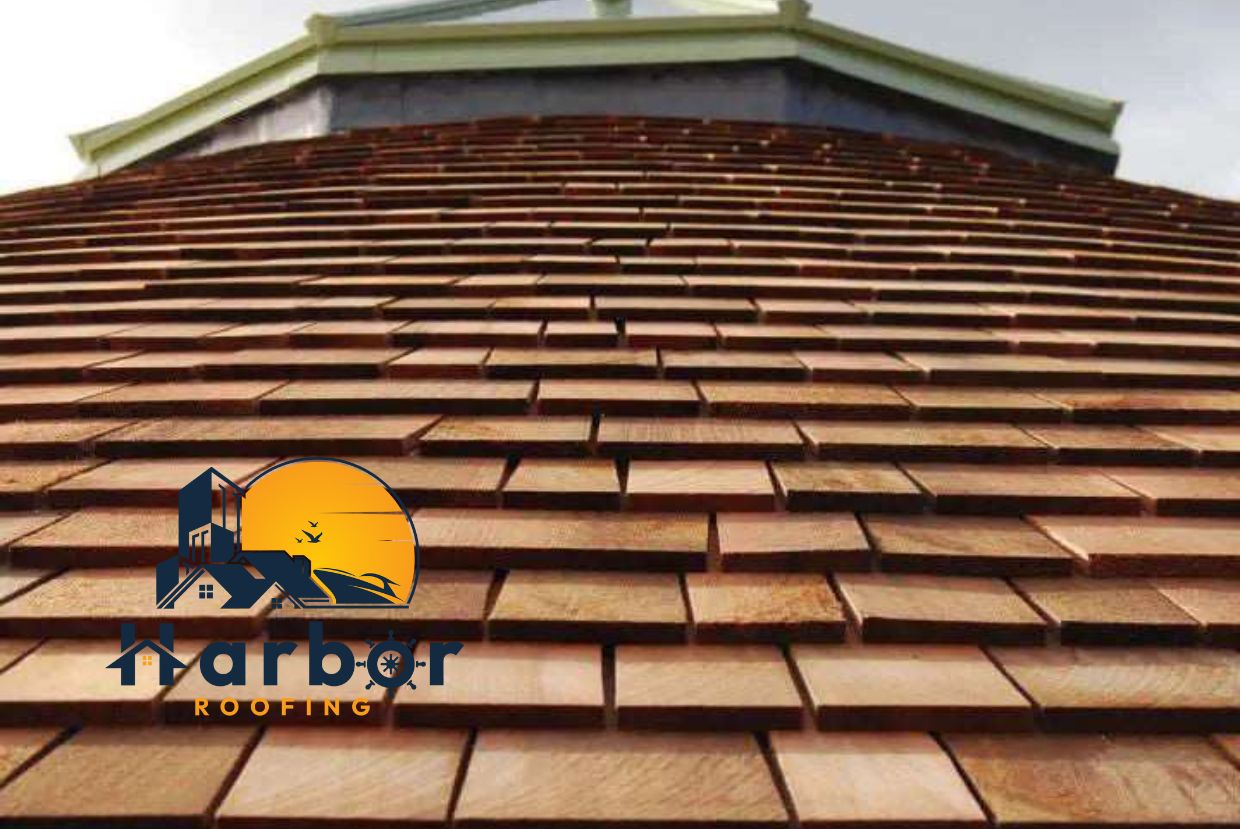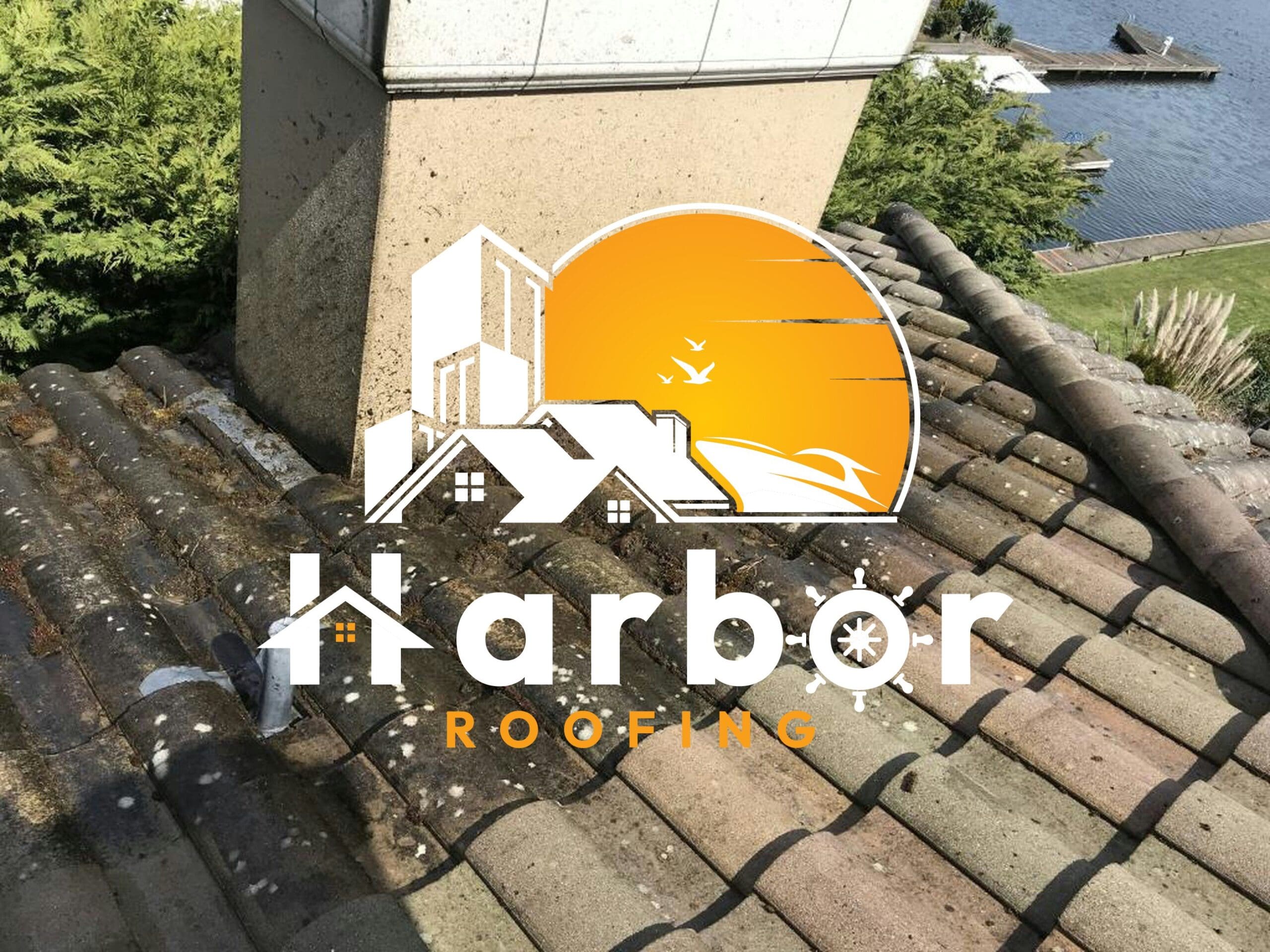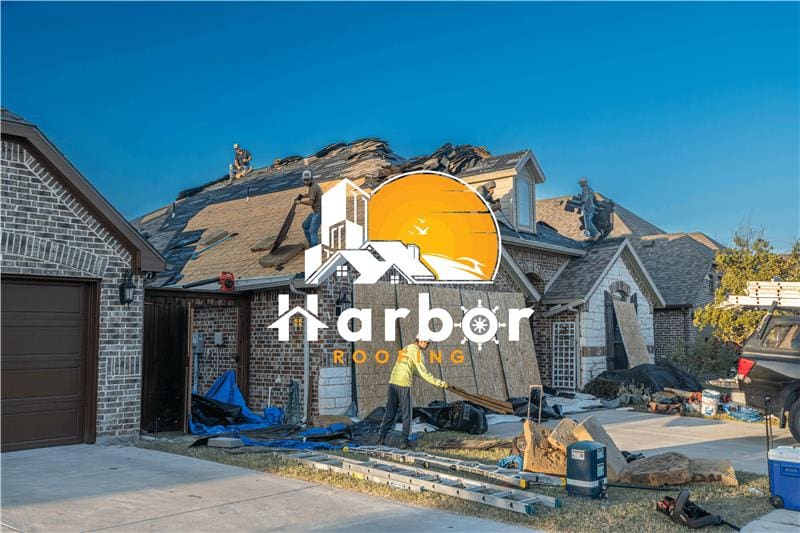Table of contents
Ever heard your roof groan during a Florida storm and wondered, “Is that just wind or is something tearing loose?” You’re not alone. For many Florida homeowners, roof damage follows closely behind heavy rains and high winds, turning every storm season into a high-stakes wager.
Today, we will use this guide to share the most prevalent types of roof damage due to wind and water. The tropical climate of Florida, especially hurricanes, humid weather, and flash downpours, leaves your roof exposed. With wind uplift and water entry to hail impacts and flying debris, we’ll teach you how to detect damage before it’s too late. Thus allowing you to safeguard your house, and to bring in the experts accordingly.
Wind Damage
Shingle Uplift
High winds have the ability to creep beneath the periphery of asphalt shingles and uproot them from the roofing deck. It loosens the seal between shingles, making weak points for water penetration. With time, consistent gusts can completely dislodge sections, particularly on old or poorly installed roofs.
This type of roof damage isn’t always visible from the ground and is commonly missed until leaks appear. Tropical storms in Florida regularly present surprise gusts that find their way into weak zones. Thus, making proactive inspections is a necessity.
Flashing Failure
Roof flashing is a minor thing, yet it serves a significant purpose in safeguarding your home from rain and wind. Flashing can be knocked loose by strong gusts near chimneys, skylights, or along ridges and valleys. When flashing is raised or warped, it creates openings for water entry, notably from storm-forced rain.
Roof damage of this type goes undetected until moisture stains show up on interior ceilings or walls. In Florida coastal areas, where hurricane-force winds may occur, flashing must be checked frequently and replaced if necessary. Not to mention, defective or old flashing act as a vulnerable spot that storms tend to hit.
Wind Intrusion Through Structural Gaps
Not everything involves wind and water damage, such as rain seeping under shingles. At times, the wind itself generates pressure that pushes water into already existing weaknesses, such as gaps around flashing, chimneys, or vents. This tends to be more prevalent where seals on older roofs have broken down.
In contrast to surface water intrusion, structural weaknesses are targeted for this intrusion, with moisture penetrating attic areas or wall cavities. These leaks might remain concealed until interior ceiling stains or mold become apparent. In Florida’s storm-prone environment, closing these structural openings and reinforcing susceptible areas is crucial for lasting defense.
Water And Leak Damage
Rain Penetration
If you’ve lived in Florida long enough, you know its intense downpours can be overwhelming, even for well-built roofing systems. When shingles go missing, get cracked, or are sealed poorly, particularly near the roof valleys, heavy rain can find its way in. Once water gets past the surface, it travels quickly, soaking underlayment, weakening decking, and spreading damage deeper into your home.
Over time, these kinds of intrusion can damage your roof decking and underlayment, resulting in a weakened structure. This means that even if you don’t see any drips inside, stains on the ceiling and bubbling paint are all signs of weather damage.
Wind-Driven Rain Intrusion
In Florida’s strong storms, rain doesn’t necessarily drop vertically — instead, it may be blown sideways by strong gusts of wind. This rain blown by wind can slide in under shingle edges, avoiding gravity-driven protections. Even if your roof looks okay on the surface, water may still be pushed in under the roof decking and soaked into the underlayment.
This type of intrusion is also very difficult to identify. Undetected moisture over a period causes wood rot, damage to insulation, and mold build-up within your house. Soffits, valleys, and ridge caps are particularly susceptible when water is blown upward or sideways due to wind. Only early inspection can identify such damage prior to incurring significant expenses.
Moisture Damage
Lingering water can result in long-term issues. Rot, mildew, and mold growth can dominate your roof decking, insulation, and support beams once moisture starts to soak in. These are more than just cosmetic issues. These types of roof damage can weaken your home’s structure and cause harm to your health when the mold begins to spread indoors.
Moreover, if left unattended, chronic water intrusion can even lead to full roof replacements and costly interior repairs. Detecting these issues early, before they develop into hidden decay, is important to bypass major restoration work.
Hail Damage
Shingle bruising
Hail doesn’t necessarily create gaping holes, but it might produce bruising, tiny marks of impact that harm the surface of your shingles. These dents tend to loosen protective granules, leaving the asphalt underneath exposed to sunlight and water. Although you may not even catch the problem at first, bruised shingles deteriorate considerably quicker than unbruised ones.
What’s the catch? These marks are discreet and typically need a close look to pick up on. If your roof has encountered a recent hailstorm. It’s a good idea to get a roofing professional like Harbor Roofing to come and inspect it, as hidden bruising can seriously shorten your roof’s lifespan.
Metal Dents
Hailstorms don’t discriminate — metal roofing parts such as vents, flashing, and skylight frames frequently bear the brunt. Even if the shingles appear to be in good shape, dented fixtures can compromise their integrity and result in leaks in the future. Furthermore, metal pieces could also be struck loose or jagged, allowing water to penetrate where it doesn’t belong.
These damages can appear to be cosmetic in nature at first. However, in time, dents will undermine sealants and cause moisture to collect around vulnerable spots. In Florida’s hurricane-prone conditions, it is vital to keep all parts of your roof, including metal hardware, storm-tight.
Debris And Impact Damage
Tree Impact
During heavy storms, flying debris such as tree limbs or broken branches usually becomes one of the most common threats to your roof. When a heavy branch crashes onto your roof, it can crack the shingles, puncture the underlayment, or break the decking. These kinds of damages are usually sudden and obvious, yet can still create hidden weaknesses leading to major damage over time.
Moreover, if left unchecked, these cracks on the surface led to water intrusion, causing long-term rot and mold. Florida’s lush tree makes regular trimming and storm prep a necessity. Doubly so if you want to prevent the nearby limbs from becoming roof-breaking projectiles.
Gutter Blockage
When debris plugs up your gutters, leaves, sticks, and roofing granules can prevent water from draining. Thus, causing pooling at the edge of the roof and around flashings, two of the leakiest locations. Eventually, this trapped water results in soft fascia, warped flashing, and inner leaks, particularly after successive storms.
This type of roof damage might seem insignificant at first, but it can escalate into expensive repairs. Full gutters with debris also tend to pull loose due to the weight and damage the perimeter of the roof. Regular cleaning of gutters prevents these cascading problems, particularly during Florida’s rainy and windy periods.
Structural Element Deterioration
Moisture Rot
With time, repeated water exposure, especially after storms, can lead to concealed rot in fascia, soffits, and roof decking. These are most sensitive when flashing deteriorates or gutters become clogged, causing water to pool. You might not catch an issue until paint flakes or wood becomes mushy. However, by then, the damage to the roof has probably extended deeper.
Additionally, Florida’s tropical environment further speeds up rot, making a small leak a structural concern in no time. Fixing these water-damaged components ahead of time prevents erosion of the overall strength and structure of your roof before the rot happens to more costly materials.
Weak Substructure
Storm damage that extends past the shingles and begins to impact your roof’s bones, such as the decking or trusses. A weakened substructure undermines everything from water resistance to load-bearing capabilities. Thus, wind pressure and rain become more damaging when the substructure wood is cracked or degraded.
This unseen roof damage tends to need more than a patch, demanding a partial or complete roof rebuild. That’s why early inspection following significant storms is a must. Catching substructure problems early can save you thousands and guarantee your home’s long-term stability.
Maintenance-Related Damage
Regular maintenance isn’t appealing, but neglect can create expensive roof failures. A leading culprit? Clogged gutters. When leaves, pine straw, or storm debris clog gutters, water flow is restricted, resulting in pooling along the roofline. That water, sitting behind shingles, seeps into decking and eventually into the interior. Therefore, causing rot and leaks that could have been eliminated with a simple season’s cleaning.
Another slow-moving threat is UV exposure. Florida’s relentless sun gradually bakes roofing materials, making them brittle. Add in high humidity and rain, and you’ve got a recipe for surface degradation. Over time, these conditions make shingles crack or curl, especially if they aren’t high-quality or properly coated.
Algae may not look threatening, but that black streak running down your shingles is more than a matter of looks. Algae and mildew are moisture-feeding organisms that consume the protective granules on shingles. If left alone, they shorten the life of your roof and pave the way for more extensive roof damage in the long run.
Prevention And Early Detection
Routine Inspections
It is easy to overlook your roof until something goes amiss, but regular checkups allow you to catch problems early. After a storm or excessive wind, inspect for raised shingles, dented flashing, or debris on the roof. However, they might look insignificant at first. They’re usually the start of major roof damage. Before hurricane season begins, a visual fly-over, either by you or a roofing professional, can help prevent problems before they become costly.
Proactive Maintenance
Gutters clogged with leaves or hanging tree branches can silently destroy your roof. Maintaining gutters free of obstructions allows water to drain freely, avoiding the buildup of moisture. Pruning trees diminishes the danger of falling branches during storms, which are one of the most frequent causes of damage to roofs in Florida. You can also opt for putting in leaf-resistant shingles and high-wind-damage flashing systems. These roofing materials significantly improve your roof’s resistance to coastal weather.
Insurance Incentives
Need extra peace of mind? Arrange for a wind mitigation inspection. These tests guarantee your home is up to Florida’s high-wind standards, such as secure roof-to-wall attachment and sealed decks. If it is, you might be eligible for insurance discounts. In addition to savings, the inspections can point you toward upgrades that fortify your roof against storms and prevent future roof damage.
What to Do After You Spot Damage
Photo Documentation
As soon as you spot possible roof damage, take out your phone and begin snapping clear, timestamped photos from various viewpoints. Zoom in on observable flaws such as absent shingles, dented flashing, or water staining inside the attic or ceiling. The idea is to capture an accurate, time-stamped visual record. These images will serve as crucial evidence for insurance claims and contractor assessments. Don’t wait to capture everything before temporary fixes or climate shifts.
Professional Assessment
Once you’ve documented the situation, call a licensed roofing professional such as Harbor Roofing for a full inspection. While surface issues may seem small, hidden structural damage is common with storm-related roof damage, and it takes a trained eye to catch it. A good roofer will inspect the entire extent safely, present a written estimate, and assist you in determining whether repair or complete replacement is required. Plus, their inspection can even help with your insurance claim.
Insurance Notification
Suppose damage to the roof appears to be caused by a storm, fallen material, or a hurricane windstorm. Contact your insurance provider immediately. Most Florida policies have short deadlines for making claims, so don’t wait. Prepare your records and the roofer’s report. This will facilitate the process, allow the adjuster to understand the issue, and increase your chances of an equitable recovery under a covered cause.
Final Thoughts
From wind-blown shingles to hidden leaks and structural weakness. Roof damage in Florida can run rampant fast. So, making it a priority to catch early warning signs is crucial. Routine inspections, photo records, and good roofers are your best protection. Don’t let small issues turn into costly repairs. Don’t know how to start your roof inspection? Call Harbor Roofing to assist you in inspecting, repairing, and protecting your home from the next giant storm.
